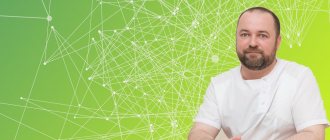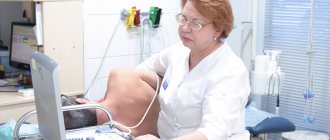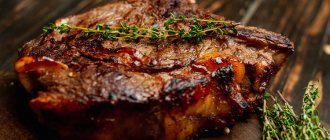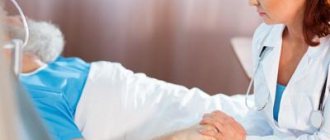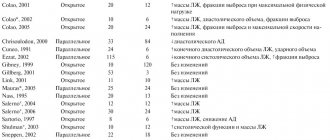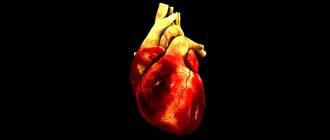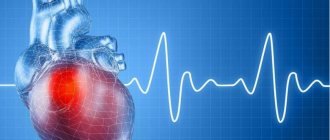STATE AUTONOMOUS PROFESSIONAL EDUCATIONAL INSTITUTION
NOVOSIBIRSK REGION
"BARABINSKY MEDICAL COLLEGE"
METHODOLOGICAL DEVELOPMENT
THEORETICAL LESSON FOR TEACHER
Specialty 34.02.01 Nursing (with basic training)
Professional module 02. Participation in diagnostic, treatment and rehabilitation processes
MDK 02.02. Implementation of rehabilitation measures
Topic 6.20. Massage as a method of rehabilitation for diseases of the cardiovascular system.
Developer – teacher Yashunina A.S.
2020
METHODOLOGY SHEET
Type of lesson –
combined lesson
Type of activity
– obtaining and consolidating new knowledge
Duration
–
90 min.
OBJECTIVES OF THE LESSON
1. Learning objectives:
— to develop professional competence
:
— Carry out rehabilitation activities within the limits of their powers in primary health care and hospital settings (PC 2.7.)
2. Developmental goals:
— Understand the essence and social significance of your future profession, show sustained interest in it. (OK 1).
— Lead a healthy lifestyle, engage in physical education and sports to improve health, achieve life and professional goals. (OK 13)
3. Educational goals:
— create conditions for developing the ability to organize one’s own activities, choose standard methods and ways of performing professional tasks, evaluate their implementation and quality (OK 2).
Teaching methods
– explanatory and illustrative, reproductive; elements of information and communication technologies (use of multimedia presentation).
Location of the lesson
- college auditorium.
Rehabilitation after myocardial infarction
| 82% | 26% |
| patients with a heart attack who have undergone rehabilitation return to work and socially active life | of those who have not undergone rehabilitation can return to work and socially active life |
From the speech of Academician E.I. Chazova at the All-Russian Forum “Development of Sanatorium-Resort Care and Medical Rehabilitation”
The Chernaya Rechka Heart Medicine Center has been operating for more than 60 years. According to our statistics, more than 80% of people who have undergone competent rehabilitation after a myocardial infarction return to a full, harmonious and active life. Those who undergo surgery to restore blood supply to the heart muscle are successfully rehabilitated in 90% of cases.
We talked about how rehabilitation works and how to get help in our article.
MOTIVATION
Cardiovascular diseases remain the leading cause of death worldwide. According to WHO, in the Russian Federation they account for 56% of all deaths, with almost half of them due to ischemic heart disease. That is why one of the primary tasks of healthcare remains the search for more effective methods of prevention and treatment of patients with cardiovascular diseases.
At present, the previously prevailing opinion about the need for complete rest or restriction of the patient’s mobility during the period of treatment has been completely rejected. On the contrary, a sedentary lifestyle is one of the significant factors in the development of diseases such as atherosclerosis, hypertension, etc. It has become clear that physical activity in patients leads to a shorter recovery period and a reduced risk of complications such as pulmonary embolism or heart failure. Thus. Currently, there is a clear understanding that interventional interventions and pharmacological treatment of cardiovascular diseases alone are not enough. In this lesson we will look at the most common and effective types and methods of massage for diseases of the cardiovascular system.
Rehabilitation after discharge from hospital
Treatment and monitoring of the patients’ condition continues at the stage of a rehabilitation center or a sanatorium specialized in cardiac rehabilitation. Objectives of the stage: stabilize the physical and psychological state of a person, awaken motivation to lead a healthy lifestyle and adapt to his regime.
During this period the patient receives:
- individual rehabilitation program - pharmacological support and physical recovery;
- practical correction of risk factors: control of blood pressure, blood sugar and cholesterol levels - after a diagnosis of heart attack, this is especially important.
- psychological assistance - analysis of personal characteristics and characteristics of the reaction to illness, psychological support;
- training in healthy lifestyle skills and self-regulation of the body, preparation for returning to work, family and society;
- recommendations for future life - drug therapy and observation, nutrition and physical activity program, lifestyle in its most important manifestations.
The most important process of recovery takes place in the rehabilitation center: the effect of medications is fully revealed, and the contact between the patient and the doctor is as productive as possible. The rehabilitation period is about 3 weeks: 18-21 days.
Let us note that only a center can cope with the task, which combines extensive experience, a solid methodological base and qualified specialists: a cardiologist, psycho- and physiotherapist, doctors and exercise therapy instructors with special training, laboratory and functional diagnostics specialists.
Close cooperation between the patient and medical staff, a positive attitude and a favorable climate also help to minimize the risk of a recurrent attack and return to a harmonious life.
Appendix No. 2
Test questions to consolidate knowledge on topic 6.20. Massage as a method of rehabilitation for diseases of the cardiovascular system
Give oral answers to the questions - frontal survey:
- Name the massage technique for ischemic heart disease.
Massage technique. First, massage the collar area in a sitting position, and then massage the lower extremities of the abdomen in a lying position. Techniques include: stroking, rubbing and kneading (especially when massaging the legs). The chest is only stroked. Techniques such as chopping, beating, and patting are excluded. The duration of the massage is 10-15 minutes. The course consists of 15-20 procedures, 3-4 courses are carried out per year.
- List the objectives of massage for myocardial infarction.
Objectives of massage: relieve pain, psycho-emotional tension, accelerate muscle blood flow, relieve reflex mechanisms that increase spasm of coronary vessels, prevent thromboembolism, improve coronary circulation.
- Name a massage technique for hypertension.
Massage technique. Patient's sitting position. Massage the back of the neck, starting from the scalp, then the shoulder area, upper back and spinal column. Continuous stroking, semicircular rubbing, transverse and longitudinal kneading are used. The mastoid processes are especially carefully massaged. Massage of the lower extremities is indicated; blood pressure can be normalized by massaging the abdomen. The duration of the massage is 10-15 minutes.
- List the tasks of massage for hypertension.
The objectives of massage are: to normalize the functional state of the nervous system, improve blood circulation and metabolism, reduce the excitability of the neuromuscular apparatus of the vascular wall.
- Massage technique for MI?
Massage technique. The first general massage procedure is carried out on the first day, and then repeated 1-2 times a day for 5-15 days. After the massage procedure, the patient breathes oxygen for 10-15 minutes. The technique and duration (10-20 minutes) of massage depend on the depth and extent of myocardial infarction according to ECG data, the general well-being of the patient and the functional state of the cardiovascular and respiratory systems. The following techniques are used: stroking, rubbing and shallow kneading. The back, lower limbs, stomach and upper limbs are massaged, the chest is stroked. Back massage is carried out with the patient on the right side, while the doctor or massage therapist supports the patient’s left hand with his left hand. hand, and with the right hand performs a back massage (rubbing, ordinary kneading, stroking).
MASSAGE TECHNIQUE FOR A PATIENT IN A POST-INFARCTION CONDITION[edit | edit code]
In the post-infarction state, massage is prescribed from the first days. The objectives of massage are to bring the patient out of a serious condition, restore blood and lymph circulation, and regulate metabolism.
The initial position of the patient during the procedure is lying on his back. The first massage sessions begin with the feet. The patient's leg is raised and lies on the upper third of the massage therapist's thigh. This position promotes natural blood flow and relaxation of the thigh muscles, which reduces the load on the heart.
The following techniques are performed on the thigh: longitudinal alternating stroking (4 - 6 times), longitudinal squeezing (3 - 5 times), stroking (3 - 5 times), double kneading (3 - 5 times), stroking (3 - 6 times) , felting (3 - 5 times). On the lower leg - longitudinal or combined stroking (6 - 8 times), any squeezing (3 - 5 times), kneading with the base of the palm, with the pads of four fingers (2 - 4 times), stroking (4 - 7 times). On the foot - combined stroking (3-5 times), squeezing with the edge of the palm (4-7 times), rubbing the intermetal spaces straight, zigzag with the pads of four fingers (3-5 times). In all areas, the set of techniques is repeated 2 - 5 times. The same is done on the second limb.
Then the right hand is massaged. The massage is done in five positions. The patient lies on his back. On the shoulder, apply longitudinal straight stroking (3-4 times), longitudinal squeezing (2-3 times), ordinary kneading (2-3 times), stroking (4-6 times). The same goes for the forearm. Massage can be performed 2 times a day, daily or every other day. Session time: 5-7 minutes.
If the reaction is positive, after 5-7 sessions a massage of the back and buttocks is added. The patient's position is lying on the right side. The duration of the session increases to 10 minutes. Massage is provided daily.
Start the massage from the back. The patient lies on his right side, the lower leg is extended, the upper leg is bent at the hip and knee joints. This position gives stability to the pose. The massage begins on the right side of the back: stroking (3 - 6 times), squeezing (4 - 6 times), kneading with the base of the palm (3 - 5 times). The complex is repeated 2 - 3 times. On the left side, the session is performed using a similar method, but kneading with the fingertips along the long back muscles (5 - 7 times), rubbing with the fingertips along the spinal column from the pelvis to the head (3 - 7 times) is added.
On the gluteal muscles, stroking (3 - 5 times), squeezing (3 - 7 times), kneading with the phalanges of the fingers bent into a fist and the base of the palm (3 - 7 times each) are carried out.
If the patient is allowed to sit or lie on his stomach, the duration of the first 5-7 sessions increases to 10-12 minutes, and if he feels well - up to 20 minutes.
The back massage begins on the right side with the patient lying on his stomach. Particular attention should be paid to the paravertebral zones (C3-C4, Dl-D8). Perform longitudinal alternating stroking (4 - 7 times), squeezing (4 - 6 times), kneading on long muscles with the base of the palms of both hands (4 - 7 times), phalanges of fingers bent into a fist (3-6 times), squeezing again (4-6 times) and stroking (5-7 times). On the latissimus dorsi muscles, double circular kneading (4-6 times), with phalanges of fingers bent into a fist (3-6 times), and shaking (3-4 times) are used. The whole complex is repeated 2 - 6 times. Next, rubbing with the pads of four fingers on the intercostal spaces: straight, combined, dotted (2 - 4 times). On the fascia of the trapezius muscle, rubbing with the pad of the thumb is straight, spiral (2 - 4 times), with the pads of four fingers (2 - 4 times). At the angle of the shoulder blade - rubbing with the edge of the palm (3 - 5 times). The whole complex is repeated 2 - 4 times. The same is done on the other side. Finish the back massage with longitudinal alternating stroking (4 - 7 times).
On the neck and trapezius muscles (on the left side the massage is longer) perform longitudinal alternating stroking (3 - 5 times), squeezing with the edge of the palm (3 - 5 times), ordinary kneading with the edge of the palm (2 - 5 times). Finish with stroking.
In the supine position, the massage begins on the left side of the chest: stroking (3 - 5 times), squeezing with the edge of the palm (3 - 6 times), double circular kneading (3 - 4 times), with the pad of the thumb (2 - 4 times), shaking (2 - 3 times), kneading with the base of the palm and the pads of four fingers (2 - 5 times each). Rubbing is carried out on the sternum and intercostal muscles (2-4 times). As you adapt and if there are positive ECG changes, the duration of the massage can be increased and other areas can be included - the abdomen, left arm and lower limbs.
Appendix No. 3
Assignment for independent extracurricular work of students
Topic 6.20. Massage as a method of rehabilitation for diseases of the cardiovascular system
Discipline,
section, topic
Kind of activity
Literature
1.
Topic 6.20.
“Massage as a method of rehabilitation for diseases of the cardiovascular system.”
1. Study the lecture notes and the text of the textbook.
- Dubrovsky V.I. “Therapeutic massage” [Text]: textbook for medical schools and colleges / V.I. Dubrovsky; Moscow Publishing house "GEOTAR-MED", 2004 - 93 p.
- Epifanova V.A. “Fundamentals of Rehabilitation” [Text]: textbook for medical schools and colleges / V.A. Epifanova; Moscow Publishing house "GEOTAR-MED", 2015 - 163 p.
- Lecture notes
Recovery stages
A comprehensive rehabilitation program after a heart attack is aimed at rapid recovery and should begin in a cardiology hospital, where the patient is admitted immediately after the attack.
The first three weeks are a period of slow return of basic motor and respiratory functions. Junior medical staff helps the patient get out of bed, move around the ward and go out into the corridor, although the support of an attentive assistant would not be superfluous.
After discharge home, the post-hospital (outpatient) stage of recovery after a heart attack begins. It lasts for about a year. At this time, it is recommended to do a restorative massage, measure blood pressure and pulse, and monitor your sleep patterns.
Goals:
- adapt a person to new living conditions;
- instill good habits and give up bad ones;
- monitor health status.
The outpatient recovery period after a heart attack will end, but in order to prevent another attack, life will have to change forever. It is especially important to remember about proper nutrition and exercise.
List of sources used
- Dubrovsky V.I. “Therapeutic massage” [Text]: textbook for medical schools and colleges / V.I. Dubrovsky; Moscow Publishing house "GEOTAR-MED", 2004 - 93 p.
- Epifanova V.A. “Fundamentals of Rehabilitation” [Text]: textbook for medical schools and colleges / V.A. Epifanova; Moscow Publishing house "GEOTAR-MED", 2015 - 163 p.
- Massage for coronary heart disease. [Electronic resource]/Cardio.ru// Access mode: https://heal-cardio.ru/2016/01/25/massazh-pri-ishemicheskoj-bolezni-serdca/
- Massage for hypertension. [Electronic resource]/Medrich.ru// Access mode: https://medrich.ru/publication_p_1.html?id=133
Acute myocardial infarction: what next?
Those who wish to use the body's reserves, especially when qualified medical care is far away.
Continued below ⇓
. critical mass of the heart muscle, essentially “rebooting” the heart
.
This therapy is time dependent and the success of defibrillator use decreases with increasing time after cardiac
.
Diagnosis infarction
Medical societies recommend confirmation.
He ran up the hill and heard the surprised voice of his neighbor:
“Alexander, what are you doing? You just recently graduated from cardiology - this is dangerous!”
“I feel good,” I thought and, having greeted my neighbor, shouted to the dog: “Bim, follow me!” I turn my back forward and jog another two hundred meters to the entrance of my house. Relaxation, contrast shower. Pulse and blood pressure are normal. For breakfast - vegetable salad, buckwheat porridge “according to Shatalova”. I feel great. And it’s even scary to remember what it was like two months ago.
In the morning, as usual, I took the dog for a walk and... lost consciousness. A neighbor brought me home. Severe weakness, sweating, pulse - 110. An ambulance arrived. After the drip it became easier. Two days later I went to see a cardiologist. The doctor glanced at the electrocardiogram (ECG) and said that there was no particular problem. A day later, I visited the hospital again, and this time the resuscitator diagnosed me with a heart attack. So that!
Hospitalized. The disease progressed more or less normally, except for intercostal neuralgia on the left, which arose on the 6th day of hospital stay. Fortunately, I remembered the great Avicenna, who said that by the age of forty you need to learn how to heal yourself. And later there were publications by V. Dikul, Yu. Vlasov, M. Kotlyarov, N. Cousins, L. Sycheva and other strong-willed, purposeful people who conquered their illnesses. From the outstanding health fighter N.M. Amosov I found the following thought:
“Despite significant advances achieved in the conservative and surgical treatment of cardiovascular diseases, the rehabilitation of these patients is not yet at a high level. Rehabilitation is designed to return the patient to his original state, identify and activate his reserves and ensure their use at the optimal level.”
The heart attack confronted me with the question: how to live on? A disabled person who fears another heart attack? During my 16 days in the hospital, I received 5 IVs and a course of nitro drugs - that’s all. No breathing exercises, no massage! They didn’t even order an ultrasound upon discharge. I remembered with sadness that it was a matter of helping drowning people. And with the thought: “Don’t survive, but heal!” — I was discharged from the hospital.
Gradually, I developed a method of rehabilitation after myocardial infarction, which I want to share with readers. It was not only my own sad experience of a “heart attack” that helped me develop it. I have an engineering and medical education and am a pulmonologist of the highest category. I also know Eastern healing techniques. I met them back in the mid-70s of the last century, when I worked together with a Chinese woman from Hong Kong in one of the datsans (Lamaist monasteries) near Ulan-Ude.
Now I teach at the Yalta Medical College, and during the summer holidays I work at the Magnolia tourist and health complex.
Two of my “companions” have already passed away from repeated heart attacks that occurred within a year after the first. And they were much younger than me, who had crossed the 60-year-old mark. In addition, in the hospital then, in 2000, the patients were not fed, and there was a poor supply of medications. It was painful to watch all this. So I thought that my system of rehabilitation after a heart attack should help the poor and those who live in the outback.
I am still polishing my system. It clearly has a positive effect. He restored his health and put one patient with a transmural infarction back on his feet (in 3 months!). His ECG is now better than before the heart attack. There were other encouraging cases.
Here are the main components of my method.
- Creating a constant positive optimistic attitude.
- Particular attention to personal hygiene (regular cleansing of the tongue, rinsing the mouth, rinsing the nasopharynx and gastrointestinal tract, hygienic shower).
- Breathing exercises.
- Massage (head, legs, arms, abdomen).
- Nutrition adjustments (if necessary).
- Walking load (for some advanced people - jogging).
After being discharged from the hospital, I began to wake up 10 minutes before dawn and the first thing I did was say the prayer “Our Father” (later I added the sentiments of G.N. Sytin). Then, without getting up, he drank in small sips the previously prepared 1 glass (a little later - 2) of water at room temperature. Then he got up and after toilet procedures began to cleanse the tongue, rinse the nasopharynx and gastrointestinal tract.
Then came the turn of breathing exercises (those who are prescribed bed rest can do them in bed).
"Heart Breathing" I. p. - lying on your back, arms extended along the body, relaxed, eyes closed.
This exercise consists of 4 parts.
- Exhale, drawing in your stomach and slightly (3-5 cm) raising your arms. As you inhale, stick your stomach out and move your hands behind your head. Then hold your breath (from 3 to 10 seconds) and exhale again, drawing your stomach towards your spine and lowering your arms.
- Exhale, drawing in your stomach and slightly raising your arms. As you inhale, stick your stomach out and move your hands behind your head. At the same time, stretch your left leg to the limit, sliding your heel along the bed with your toe up. At the peak of inhalation, the arms, body and left leg are stretched like a string. Relax while exhaling.
- Repeat, while inhaling, extending your right leg.
- Repeat, while inhaling, stretching both legs.
- Bend your fingers, giving them the shape of a comb, and massage your head with your fingers and palms at the same time, moving from the top to the bottom of the hair until you feel warmth, at least 30 times. Shake your brushes, relaxing them.
- This is followed by a massage of the hands and feet.
I. p. - lying on your back or sitting, use your hand to fix the foot lying on the thigh, and with the first finger of the other hand, with moderate pressure, clockwise, massage the foot until warmth appears. Massage time: the first 1-2 sessions - 3 minutes, then - at least 5 minutes. If possible, measure your blood pressure; it should not exceed 160/90 mmHg. Art. - Shin massage. First, do 3-4 rubbings from the ankles to the knee, then stretch your legs with both hands, increasing pressure on the knee joint until warmth appears.
- Thigh massage. Use both hands to rub and knead, increasing pressure on the hip joint.
- Lumbar massage. Place your fists behind your back as much as possible and massage your lower back with stroke-shaped movements up and down. The lower back can be massaged with any unpainted, unpolished stick (for example, ebonite) or a wooden ribbed massager. I massaged it with a copper tube (the best option), after sanding it to a shine with sandpaper.
- Abdominal massage. I. p. - lying on your back, arms extended along the body, legs slightly bent at the knees. Place your left hand behind your back and place it at the base of the thigh, and with your right hand do a circular massage of the abdomen, starting from the solar plexus towards the left from the navel to the lower abdomen. Perform 30 times. Repeat, changing hands.
Knead your stomach with little effort, especially in those places where pain is felt (until it disappears or is significantly reduced). If for some reason you cannot knead your stomach, apply point pressure. With the thumb or three middle fingers of one hand, apply local pressure on the stomach, and with the other, support it so that it does not get tired in the hanging position. Press until it hurts a little, press, hold for 2-3 seconds, release slowly. Press along the midline of the abdomen and on both sides at 7-9 points until the pain decreases or disappears. Instead of point pressure, you can lightly tap with your fists.Contraindications: 1.5-2 hours after meals, acute abdominal diseases, malignant tumors, menstruation.
- And one more very important point.
Experts have found that within 2 hours after myocardial infarction, the blood supply to the liver is disrupted, sometimes significantly, especially if it was previously “compromised.” Given the close connection with the blood supply to the spleen, both organs need to be massaged. I would like to draw your special attention to this. So, simultaneous massage of the liver and spleen. The right palm is on the liver (right under the rib), the left palm is on the spleen (left under the rib), the base of the fingers is on the edge of the costal arch. Exhale - pull the stomach towards the spine, bend the fingers and plunge deep into the stomach, if possible, leading into the hypochondrium. Hold your breath for 3-10 seconds and at this time gently massage the edges of the liver and spleen from the periphery to the center. From 3 seconds, gradually increase the breath hold to 10. Inhale - the stomach protrudes. Relaxation - 10 seconds. Repeat the entire cycle 10 times. The appearance of slight pain, usually in the liver area, is not a contraindication. - At the end of the session, massage the pectoral muscles, bypassing the nipples. Right - 1 minute, left - 2 minutes.
All 4 parts of the exercise are 1 cycle. Start with 1 cycle and increase their number to 10, adding 1 cycle per day. Inhale and exhale through the nose, smoothly, without flaring the nostrils. The duration of inhalation and exhalation is 1:2. Start like this: inhale for 4 seconds, exhale for 8 seconds, hold on exhalation for 3 seconds.
"Full breath." I.P. - lying on his back. Palms on stomach, eyes closed. Exhale - the stomach is pulled towards the spine. Inhale (smoothly, through the nose), palms feel how the anterior abdominal wall rises. First, the lower parts of the lungs are filled with air, then the middle and finally the upper. This is followed by a delay in inhalation - from 3 to 10 seconds (increase it gradually). Exhale (smoothly, through the nose) - the stomach is drawn in towards the spine. The inhalation is conscious, and the exhalation is spontaneous. The ratio between them is 1:2. It is recommended to perform 30 breathing exercises per day, taking into account “Cardiac Breathing” and “Full Breathing”. At first, do 10 exercises 3 times a day, later - 15 exercises 2 times a day. After breathing exercises - 10 minutes of relaxation.
The massage requires little preparation. Palms (hands clean, nails trimmed) pressed tightly together, fingers straight between fingers. Rub your fingers and palms until heat appears. Then, using the thumb and index finger of your right hand, rub each finger of your left hand along the lateral surfaces from the base in wave-like movements. Increase pressure at the base of the nail plates until they and the fingertips become red. Rub each finger 3 times. Rub the fingers of your right hand in the same way. After this, your hands are ready for massage.
I perform the massage using deep, rhythmic breathing. The entire session takes an average of 50 minutes.
I strongly recommend using mudras (in ancient Indian this word meant “giver of joy”) as an important element of rehabilitation after a heart attack. In practice, mudras can become a variety of gestures, body positions and fingers.
Use at least one, but a very important one. It's called "Life Saving". Everyone should learn to perform this mudra, since its timely execution can save the life of not only you, but also your loved ones - in the event that pain in the heart appears, the heartbeat increases, a heart attack occurs, or a myocardial infarction occurs. Relief occurs almost immediately; The effect of mudra is similar to the use of nitroglycerin.
You need to perform the mudra with both hands at the same time, in a lying, sitting or standing position, facing east, with your eyes closed. Press the pads of your index fingers to the bases of your thumbs. At the same time, connect the pads of your middle, ring and thumb. Straighten your little fingers without tension.
The arms are bent at the elbows and are located on the lower border of the pectoralis major muscles. Inhale through the nose, exhale through the mouth. If you can, try to see the green color and smell the geranium while performing the mudra.
This mudra can be used as an “ambulance” or for 15 minutes 3 times a day for prevention purposes. By the way, a description of this and 24 other mudras is given in Ramacharaka’s book “Hatha Yoga. Philosophy of physical well-being."
I carry out hardening procedures in a minimal amount. During a hygienic shower, I first pour warm water on my legs and feet, then cool or cold water for 10-15 seconds. I rub myself well with a towel.
Diet
I agree with the opinion of N.M. Amosov that if the patient did not have problems with the gastrointestinal tract before the heart attack, then he does not need any special diet. The main thing is not to overeat. Dinner - 1.5-2 hours before bedtime. My breakfast is mostly vegetable or fruit. I recommend carrot-beet salad with unrefined vegetable oil or sour cream. A salad of Jerusalem artichoke (earthen pear) and cucumbers, seasoned with lemon juice and honey to taste, is also good. Prunes are very useful - 100 g per day. For lunch and dinner: boiled fish, meat, chicken, turkey, broths from vegetable tops, cottage cheese, hard cheeses. Jelly or a decoction of oats in husks with honey is very useful. If tolerated well, it is useful to eat garlic (the norm for adults is 3 cloves per day) and onions. It should be noted that after a heart attack, food allergies may appear for the first time, especially to citrus fruits.
Constipation, even if it existed before a heart attack, sometimes becomes a serious problem after it. So, full breathing, massage and a vegetable diet in most cases relieve this problem.
Motor mode
If you have had and still have high blood pressure, and you don’t know its cause, then while in the hospital, try to find out, since hypertension can be caused by over 50 diseases, and it is necessary not only to take drugs that lower blood pressure, but to treat diseased organs . If your condition allows, start walking, monitoring your well-being, pulse and blood pressure, although not everyone has the opportunity to measure it themselves. Therefore, the easiest way is to focus on your well-being and pulse.
Count your pulse for 1 minute. With even steps and even breathing, transferring the weight of the body from heel to toe, walk 1 km along a flat track. After 3 minutes, measure your pulse again. It should return to the original level. Every week add 0.5 km. If you feel satisfactory, increase the load to 5-6 km in 1 hour. The pulse at the end of the journey should not exceed 10 beats per minute compared to what you had at rest (before the load). And keep in mind: slow walking without a slight increase in heart rate, even 10 km a day, is not a therapeutic measure, but rather a preventative one.
I recommend jogging, but not to everyone, since selecting loads and monitoring them is quite complicated. However, about 50 years ago, myogenic (formed in muscles) biological stimulants that can resolve blood clots were discovered in the blood of long-distance runners. Keep this in mind.
The severity of the disease, age, concomitant diseases, complications after a heart attack require a carefully thought-out approach to rehabilitation, certain knowledge, faith and constant monitoring of well-being, for which I recommend keeping a self-monitoring diary.
I assure you that after a myocardial infarction you can recover. This is proven not only by my experience, but also by the experience of 9 people who were cured using my method.
In addition to what I have already talked about, with fairly good results I used leeches, Contractubex ointment (when massaging the left pectoral muscle and left shoulder blade), mumiyo, propolis, massage of biologically active points and, according to indications, anthelmintic and antigiardiasis treatment. If readers are interested in details, I will share them.
And one more piece of advice. From the very beginning of treatment, I consider it necessary to take aspirin - 1 mg per 1 kg of body weight (70 kg-70 mg) once a day after dinner, atenolol or tenoric (in the absence of contraindications).
My technique can certainly be supplemented with something else useful. So look for new, better things and share your discoveries. May we all be healthy!
Find out more on the topic of heart attack, heart:
Heart attack
myocardium - symptoms, treatment and prevention
What to do after a heart attack
. Lifestyle changes
Heart attack
myocardium and acute coronary insufficiency
Cardiac ischemia
– symptoms and signs, treatment and causes of coronary artery disease
Physical education and gymnastics
Physical rehabilitation after a heart attack will be incomplete without restoration of motor activity. Minimal movements are still necessary in the intensive care unit. Massage, walking, and later, from 6-8 weeks after a heart attack, therapeutic exercises help restore natural mobility.
Loads are increased gradually, taking into account the condition, monitoring blood pressure and pulse. If recovery goes well, you are allowed to begin daily exercise, gradually increasing their intensity. Physical therapy (physical therapy) after a heart attack is a necessity, as it helps restore microcirculation and supports the heart muscle. You can start exercising after consultation with a physiotherapist and under constant supervision. Doing exercises alone after a heart attack is dangerous!
If the prognosis is positive, sports activities are gradually increased. The following are gradually added to the set of exercises:
- yoga, pilates;
- swimming;
- bicycle and ski simulator;
- climbing stairs.
Regardless of gymnastics and exercises, those who have had a heart attack are recommended to take daily walks in the fresh air.
In Moscow, a qualified nurse from the “Reliable Support” patronage service will help with rehabilitation after a heart attack. She will take care of the patient’s daily needs, monitor compliance with the attending physician’s instructions, and help with walks and exercises. Sensitive and attentive, a professional nurse will always listen, as she knows the importance of psychological support after a serious illness.
A systematic approach to rehabilitation after an acute myocardial infarction helps the patient recover faster and return to his previous life.
